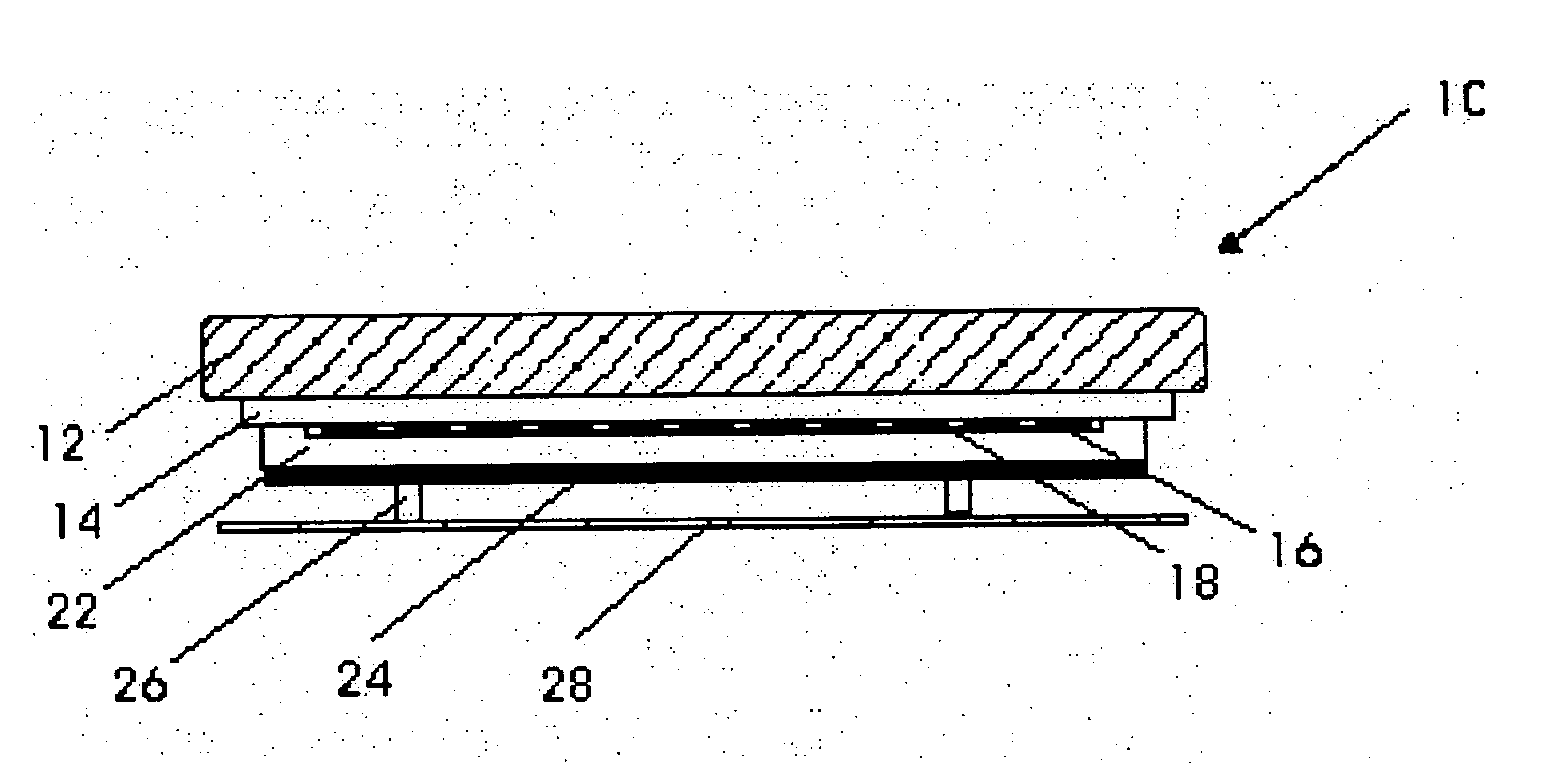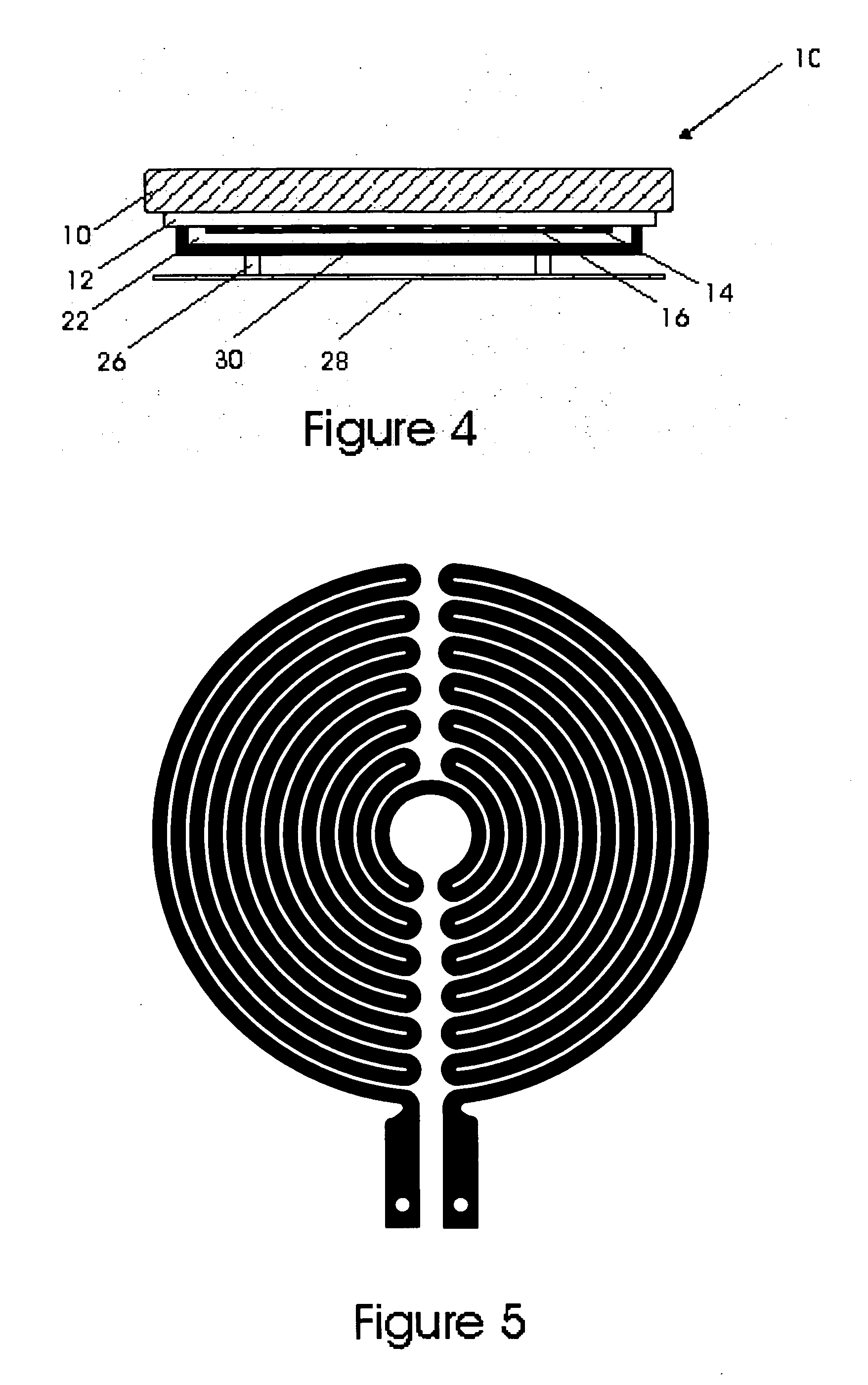Integrated thin high temperature heaters
a heater and high temperature technology, applied in the field of integrated heaters, can solve the problems of limiting the utility of these materials, unable to be attached directly to metal, and viable high temperature, and achieve the effect of efficient thermal transfer
- Summary
- Abstract
- Description
- Claims
- Application Information
AI Technical Summary
Benefits of technology
Problems solved by technology
Method used
Image
Examples
example 1
[0034] A high temperature glass ceramic cooktop such as shown at 10 in FIG. 2 was fabricated by forming the electrically insulating layer 14 on base substrate 12 by depositing 500 micrometers of sol gel composite alumina-silica, to form layer 14, onto zero expansion lithium aluminosilicate (LAS) glass ceramic base 12 as shown in FIG. 1. An etched foil resistive heating element 16 (FIG. 2) was made by attaching a 25 micrometer thick sheet of 304 stainless steel to 75 micrometers thick Firox™ mica paper backing material 18, using a silicone adhesive. Using a stainless steel etching solution, a meander pattern element with a circular envelope was produced as shown in FIG. 5. This etched foil 16 backed by mica paper 18 was placed on top of the dielectric coated 14 glass ceramic base 12 with the element 16 facing down so that it was in direct contact with the dielectric layer. The element 16 was then fixed in place using a high temperature aluminosilicate cement 20 as shown in FIG. 2. Th...
example 2
[0036] A high temperature glass cooktop was fabricated by depositing 500 micrometers of sol gel composite alumina / silica of sol gel composite alumina-silica onto zero expansion LAS glass ceramic. An etched foil was made by attaching a 25 micrometers thick sheet of 304 stainless steel to 75 micrometers thick Firox™ mica paper using a silicone adhesive. Using a stainless steel etching solution, a meander pattern element with a circular envelope was produced. This etched foil backed by mica paper was sandwiched between the dielectric coated glass ceramic, and a ¼ inch disk of lightweight, thermally insulating vermiculite board 22. The entire unit was then placed inside a fixture in which a pressure plate 24 backed by springs 26 connected to a mounting frame 28 were used to keep the vermiculite firmly affixed against the dielectric coated glass ceramic as shown in FIG. 3.
[0037] This unit passes the high pot standard for glass ceramic cook tops and operates stably up to element temperat...
example 3
[0038] A glass cooktop is made according to the design described in Example 2, except that the vermiculite disk is fixed to the dielectric coated glass ceramics by using silicone to attach the vermiculite around periphery of the disk, where the temperature is cooler.
PUM
 Login to View More
Login to View More Abstract
Description
Claims
Application Information
 Login to View More
Login to View More - R&D
- Intellectual Property
- Life Sciences
- Materials
- Tech Scout
- Unparalleled Data Quality
- Higher Quality Content
- 60% Fewer Hallucinations
Browse by: Latest US Patents, China's latest patents, Technical Efficacy Thesaurus, Application Domain, Technology Topic, Popular Technical Reports.
© 2025 PatSnap. All rights reserved.Legal|Privacy policy|Modern Slavery Act Transparency Statement|Sitemap|About US| Contact US: help@patsnap.com



